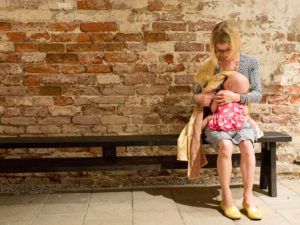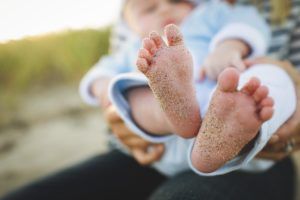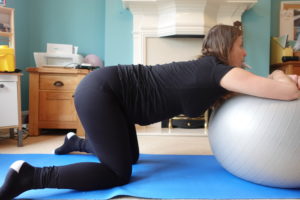Bronchiolitis and
Chest Physiotherapy
What cause Bronchiolitis?
Its main cause is the RSV (respiratory syncytial virus). 90% of the babies under 2 years old are colonized by this virus and 40% of them develop the disease, which make this affection the most common one at this age.
However, bronchiolitis can have other causes like allergic or environmental factors. For some babies bronchiolitis is only the first manifestation of asthma. Therefore, one of the aims of the baby’s physiotherapist is to determine what cause the bronchiolitis, to develop an appropriate treatment.
For more details, like how the pathology start and progress or sign of respiratory distress, have a look at our paediatric section about bronchiolitis.

What are the symptoms of a bronchiolitis? And how paediatric physiotherapists can diagnose your baby?
Bronchiolitis is the most frequent trouble in babies caused by a viral infection of the lower respiratory system. It has a seasonal pick between ends of October to beginning of March (even if it can appear at any other time of the year).
Bronchiolitis, like most of respiratory issues, is composed of 3 elements:
- Inflammation
Inflammation is a natural protection of our body against external attacks. But in bronchiolitis, it leads to oedema (swelling of the airway) reducing the diameter of the airway and the ability of your baby to breath. Inflammation creates a wheezing sound which physiotherapist are looking for during auscultation. It also causes a dry cough.
- Bronchospasm
Bronchospasm is a contraction of small muscle inside your respiratory system. It is the same phenomenon causing asthmatic attack. Like inflammation, it creates a wheezing sound which physiotherapist is looking for during auscultation. Dry cough is also a consequence of bronchospasm.
- Increase mucus production
Mucus is produced continuously in our airway. However, in bronchiolitis, babies are not able to clear it fast enough and it built up. Mucus building up in the airway creating crackle sounds enabling physiotherapist to differentiate mucus from inflammation and bronchospasm
For more details, like how the pathology start and progress or sign of respiratory distress, have a look at our section about bronchiolitis.

How to treat bronchiolitis?
Medication: your GP or paediatrician can prescribe bronchodilator (to open your baby’s airway) or corticosteroid drugs to decrease inflammation. Another efficient way to reduce inflammation is to nebulise hypertonic saline water (very salty water). We put a link in the shop section for the Nebuliser brand we recommend to our patients.
Chest physiotherapy: these physiotherapy techniques intend to clear the bronchial mucus secretion that your baby is unable to evacuate by himself. The paediatric physiotherapist uses his hands to to control and increase the air volume coming in and out of the lungs of your baby.
These movements will slowly bring the mucus out of the lungs to the mouth of the baby. The mucus will be either collected in a tissue or the physiotherapist will let your baby swallow it, the mucus ending in the stomach to be digested. The second possibility is actually the natural way mucus is eliminated by our body. It is the reason why you can find kind of mucus poo in your baby diaper.
These techniques are repeated several times with period of break to give time to your baby to expectorate/swallow the mucus. There are no risks as the pressure applies on your baby chest only move their ribs in normal physiological amplitude (your baby is just breathing in and out very deeply).
In most cases, babies cry during chest physiotherapy session both because the techniques are not enjoyable (water in the nose and block on their back) and because they don’t understand what happen to them. However, as soon as the physiotherapy session stops, the cry also stops.
For more details look at Chest Physiotherapy.
Nose wash: can be performed by a paediatric physiotherapist or you. It consisted on the introduction of saline water in the upper airway (nose) of your baby. Isotonic solution (similar concentration to physiological liquid) is used to avoid irritating the sensible nose of your baby. The aim is to flowed the upper airway to collect all the sticky mucus which either will be expulsed by the nose or swallow.
For more details look at Nose Wash.
A Chest Physiotherapy session always start and finish with an auscultation to diagnose a bronchiolitis or a chest infection at the beginning and to evaluate the progress and determine if another session is necessary at the end. The number of session varies generally from one to 5 sessions depending on your baby initial state and progress. Finally, baby’s physiotherapist also provides specific advice to help you and your baby to manage this difficult period.


